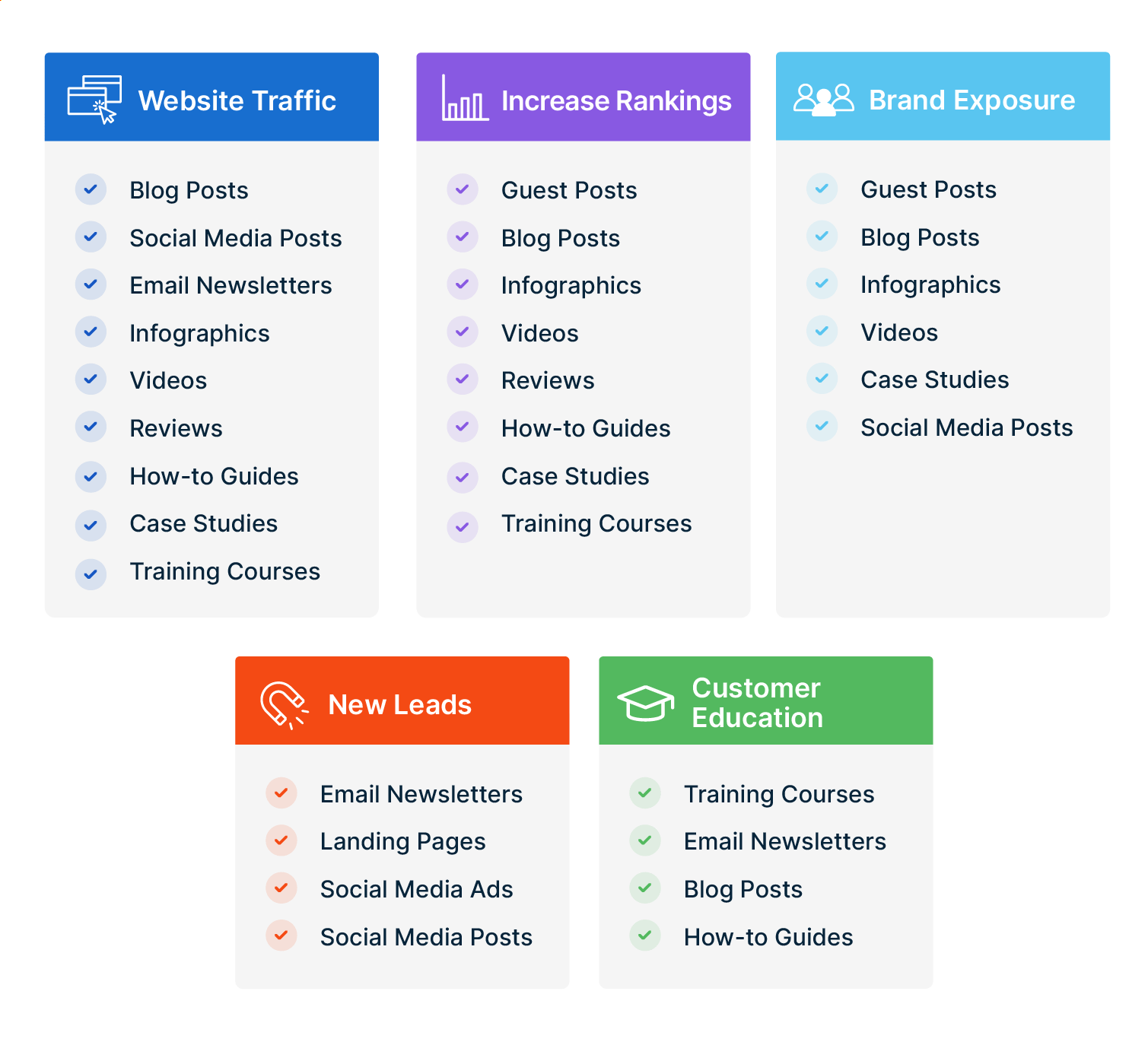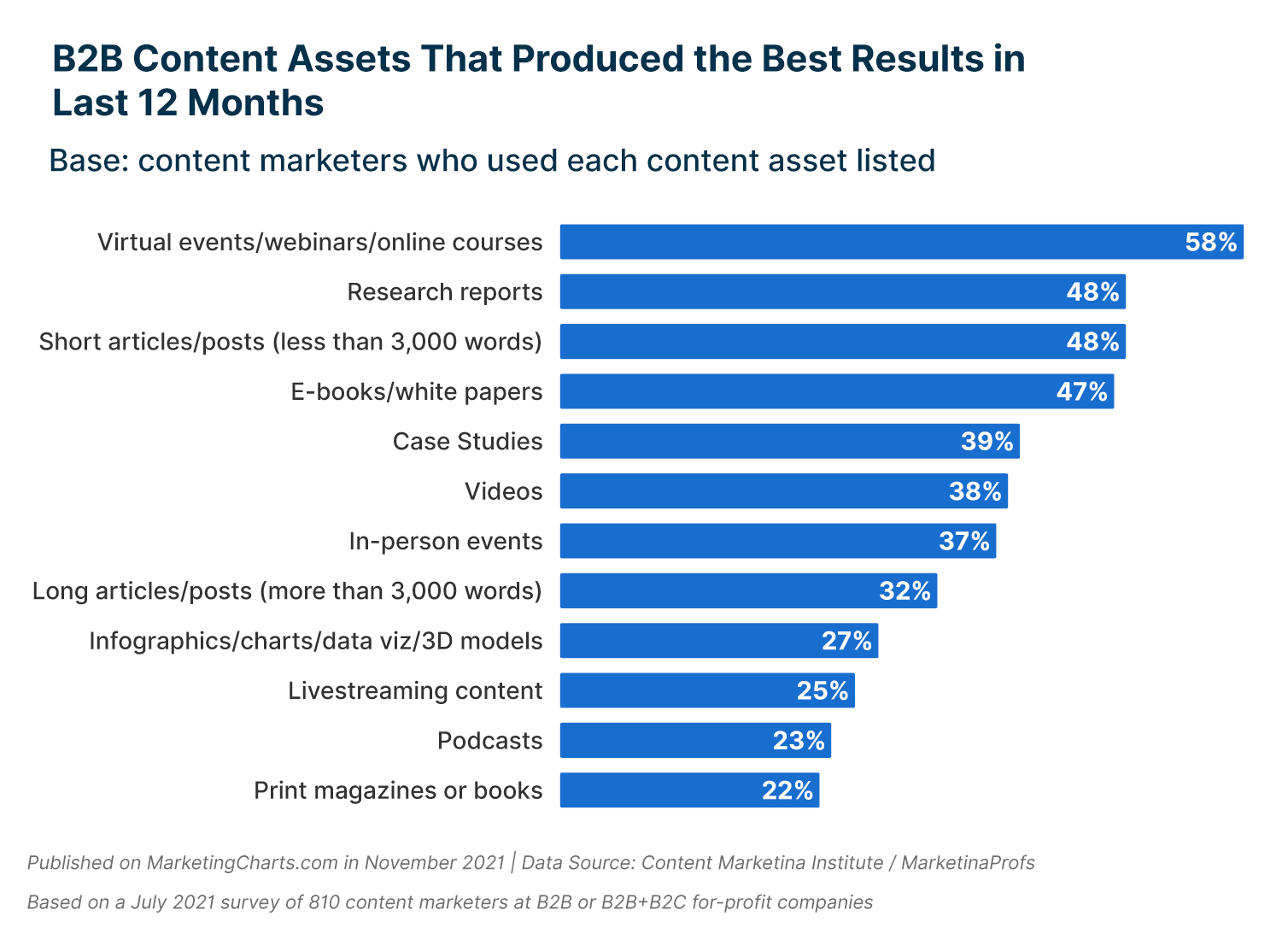
What Does ‘Great Content’ Mean to Your Organization?
Article Summary
Content quality is a topic of discussion among marketers, with many using terms like "good content" and "quality content" interchangeably. However, there's a distinction between the two. While good content is well-written and educational, great content goes beyond, helping businesses achieve specific goals such as lead generation or conversions. For content to be considered great, it should be goal-oriented, providing a clear next step for the audience. It should cater to a specific audience, addressing their unique needs and pain points. Engaging formats, like videos or interactive elements, can enhance content appeal. Offering a fresh perspective on a topic, backed by research and statistics, can set content apart in a saturated market. Moreover, even great content needs regular updates to remain relevant and effective. By understanding these nuances, businesses can elevate their content strategy, ensuring it's not just good but truly great.
How often have you heard the phrases “good content” and “quality content”?
While marketers love throwing around these terms, not many take the time to explain what great content really means. Instead, marketers need to define great content so we know it when we see it. Marketers can then use that definition to ensure their content meets that criteria.
So, what does great content mean? We’re breaking down the phrase to ensure tech marketers know how to build great content for their companies.
Key Takeaways:
- Great content helps marketers achieve business goals
- Create content with a purpose, specific audience, and clear, intended action
- To ensure content achieves its goal, use targeted distribution approaches like content syndication
What’s the Big Deal About Great Content?
Good content, great content—what’s the big deal? Isn’t it all the same?
No, all content isn’t equal. Good content is well-written and educational. While good content might encourage a few shares and likes, that’s as far as good content goes.
However, great content helps your business achieve goals, like generating quality leads or converting prospects. These goals bring a consistent return on investment (ROI) from content marketing.
According to 81% of marketers, content is a core strategy. However, marketers also agree that content for content’s sake isn’t enough. Instead, 83% of marketers say the quality is more important than the quantity of content.
How Can You Know When Content Is ‘Great’?
Use these metrics as a benchmark to know when content has reached the “great” status:
DO: Use Goal-Oriented Metrics
Great content consistently helps marketers reach goals. Some examples of goal-oriented content marketing metrics are:
- Leads generated
- Number of leads that convert
- Relevant traffic coming from a source
- How much time readers spend on content
- Number of conversions compared to total impressions
DON’T: Use Vanity Metrics
Vanity metrics make content look good but they hold no actual value. For instance, many website visitors look impressive, but without metrics showing how many visitors convert, that metric is just a vanity metric.
Instead of getting wrapped up looking at performance numbers in isolation, compare numbers and reach deeper conclusions like how many visitors turn into leads, then how many leads convert into customers. These quality metrics give the most value to marketers looking for an accurate idea of how well marketing content is performing.
6 Pillars of Great Content for Tech Organizations
What makes great content great?
Use these six pillars of great content to ensure each piece consistently achieves marketing goals.
1. Give Each Piece of Content a Clear Purpose
Content for content’s sake is the fast lane to a mediocre content marketing strategy and wasted resources. Marketers don’t have the time or budget for mediocre content.
If marketers want homerun content every time, marketers need to create content with a purpose. Marketers need to ask themselves: why do you want to write a blog post, or why do you want to present in a webinar?
Marketers should create goals for every digital asset they make to ensure that there will be a return for the time and resource investment in content creation. For instance, the purpose of webinars for lead generation is to connect tech businesses with marketing qualified leads (MQLs).

2. Provide a Clear Next Step
A content’s purpose isn’t a national secret but rather the highlight of the content. That’s why call to actions are usually in bold type or highlighted with a large image and a button that encourages readers to “click here!”
Wait, isn’t modern content supposed to skip the sales jargon and focus on educating the audience? That’s right. Content shouldn’t be one giant ad. However, if marketers skip sales content altogether, marketers also miss out on conversions, which is the ultimate purpose of content creation.
Therefore, ensure each piece of content provides a clear next action, whether signing up for a free trial, joining a webinar, or subscribing to an email list. The commitment level of the call to action depends on where the content falls in the sales funnel.
3. Create Content for a Specific Audience
When was the last time someone had open heart surgery at their primary care provider? Hopefully never, because primary care providers have broad medical knowledge but aren’t experts in any one field. That’s why there are medical specialists.
The same is true with content marketing. Content that’s trying to reach everyone is like a primary care provider. That content is broad and general but doesn’t address specific issues. On the other hand, the most valuable type of content is “specialist” content—authority information about a particular audience dealing with niche pain points. That’s the content most professionals want to consult for trustworthy and relevant solutions.
Great tech content relies on heavy research within specific branches of the tech industry. Then, marketers use direct marketing strategies to ensure the intended niche audience sees that specialized content.
For example, ActualTech Media uses content syndication for lead generation to send digital assets to a hyper-targeted audience to bring in MQLs.
4. Make Engaging Content
The top-performing B2B content is webinars, followed by research reports and articles less than 3,000 words. Tech professionals are human and prefer to consume content in engaging ways. Videos, images, and short blurbs of information are vastly more appealing than pages of straight text arranged in word-heavy paragraphs.
Great content is engaging content that captures the audience’s attention, retains it through interesting information, and cuts out fluff and jargon that doesn’t add to the main message.

5. Share Something Unique
According to the SEMRush keyword research tool, “content marketing” has 4.4 billion search results. If marketers wanted to write on content marketing, the writers would struggle to stand out. That’s why unique content is crucial in the oversaturated Internet of information.
Unique content addresses topics—even popular topics like content marketing—from a new angle. For instance, marketers might talk about customizing content marketing for specific industries or how to adjust content marketing due to current events, like the adoption of virtual and augmented reality. These unique angles take a topic that marketers have overdone and make the topic fresh and inviting.
The key to unique content is backing up claims with statistics, personal research, and fresh perspectives. These elements turn good content into what businesses call thought leadership or great content.
6. Update Great Content
Content marketing is a living strategy. Once marketers share or publish content, the marketing team should continue monitoring the content’s performance to ensure the content continues to perform optimally.
When content performance dips, marketers should decide whether the content needs to be edited, rewritten, or deleted. Often, marketers perform an annual content audit to look over how well content is performing. Then, the writing team updates and fixes content that’s not ranking or generating leads. That way content continues to be great.
Invest in Great Tech Content
ActualTech Media helps tech professionals make and disburse great marketing content with specific goals and audiences. Work with a content designer to create niche content for the tech industry. Then use our content syndication strategy to reach a target audience to ensure each content investment achieves marketing goals.
Contact us to find the right content marketing solution for your content creation goals.